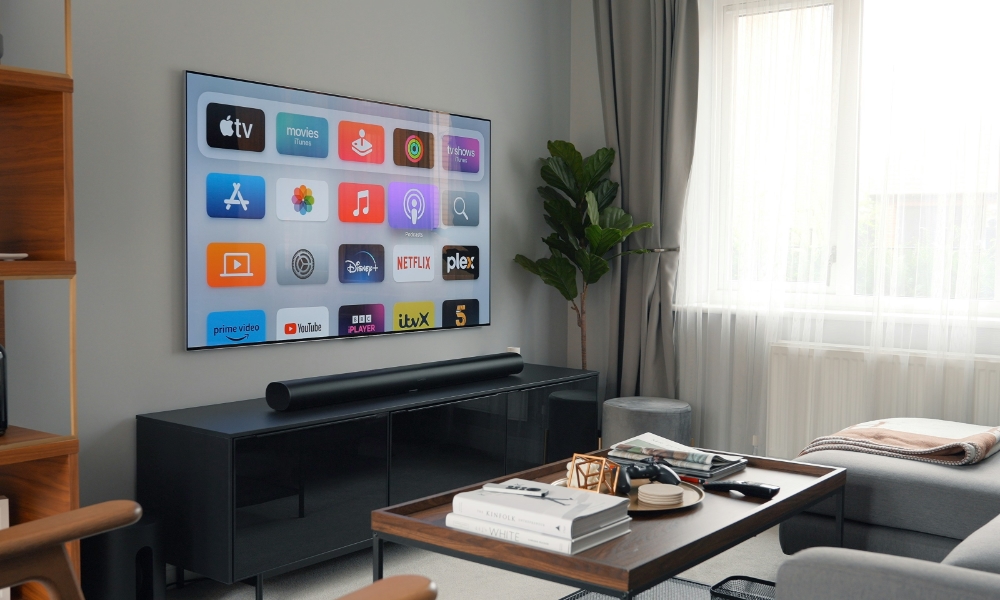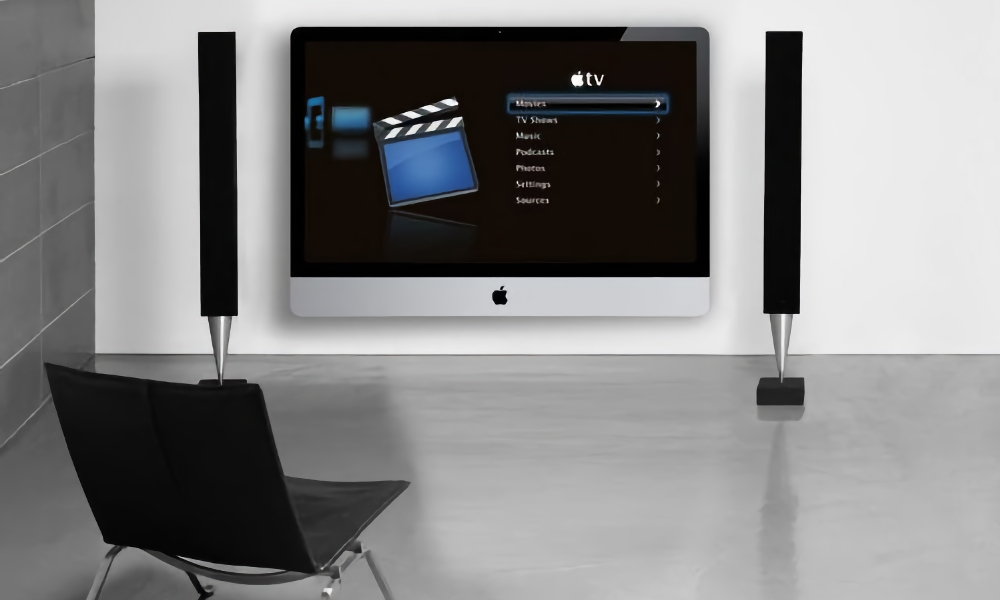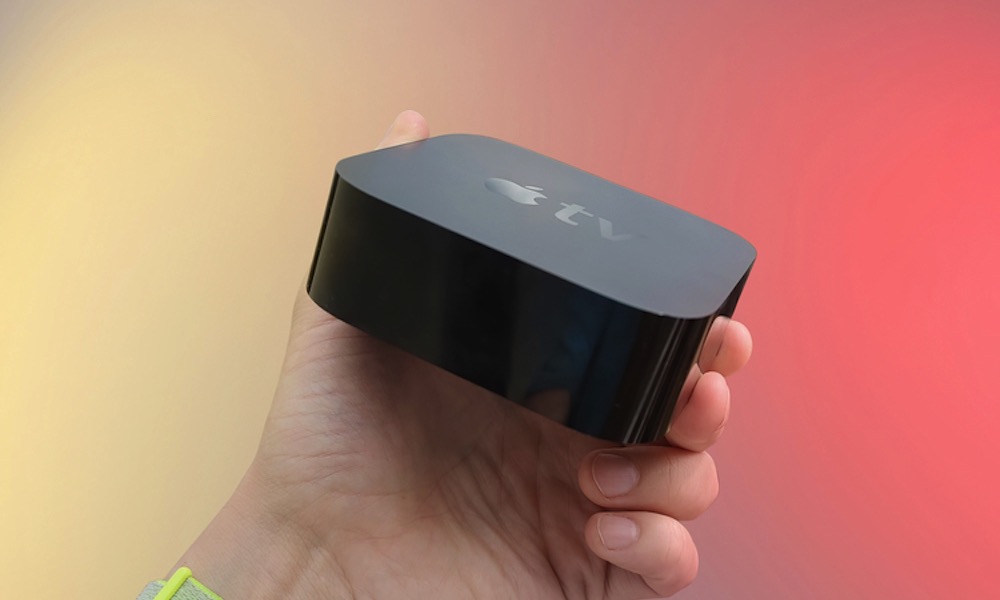Is Apple Working on a TV Set (Again)?
 Adam Kenton
Adam Kenton
Toggle Dark Mode
There was a time when many analysts and other industry pundits firmly believed Apple was working on an Apple television set. It was a device that never materialized, but now it looks like Bloomberg’s Mark Gurman is stoking the last dying embers of these decade-old rumors in this week’s Power On newsletter.
According to Gurman, Apple is “evaluating” the idea of an Apple-branded TV set based on its reinvigorated living room ambitions. Last week, Gurman reported that Apple’s home hub smart display could arrive early next year and doubled down on the notion that we’ll likely see a “tabletop robot” by the end of 2027. With Apple also reportedly working on a smart home security camera, it’s not that entirely out of the question that a full-sized television set could be somewhere on the roadmap.
Except it’s an even bigger long shot in today’s tech economy. Gurman isn’t predicting anything solid here, to be clear — his exact words were that Apple “may even revisit the idea of making an Apple-branded TV set,” — so there’s a lot of hedging there, but it’s still a blast from the past to hear this idea resurface.
However, the rumors during the 2011–2014 era were spurred by Steve Jobs’ famous comment to his biographer, Walter Isaacson, that he had “finally cracked” the solution to an integrated television set. From Isaacon’s book, Steve Jobs:
He [Jobs] very much wanted to do for television sets what he had done for computers, music players, and phones: make them simple and elegant. “I’d like to create an integrated television set that is completely easy to use,” he told me. “It would be seamlessly synced with all of your devices and with iCloud.” No longer would users have to fiddle with complex remotes for DVD players and cable channels. “It will have the simplest user interface you could imagine. I finally cracked it.”
If Jobs had indeed solved the complexity of the television sets of that era, he likely took that secret with him to his grave. Either way, his successors never turned it into a finished product, despite reports that Jobs’ right-hand design man, Jony Ive, had worked on the project.
There were rumors and whispers about Apple’s work on a so-called “iTV” even before Jobs confirmed his vision with Isaacson. By late 2011, Bloomberg reported that Apple had pegged Jeff Robbin of iTunes fame to lead the TV effort. In early 2012, Jon Rettinger of TecnoBuffalo reported that a “high-ranking source” inside a “major electronics retailer” had personally seen pre-production versions of the set, describing it as a “gorgeous” and “very thin” 42-inch OLED set, which was on the larger side in 2012.
On top of that, Apple analyst Gene Munster repeatedly predicted that Apple’s television set was just around the corner, often describing it as “the biggest thing in consumer electronics since the smartphone.” Others jumped on board, and by 2015, the hype had reached fever pitch, with predictions that 55-inch and 65-inch UHD TVs were coming with integrated FaceTime features — until the Wall Street Journal threw a big bucket of cold water on the idea.
According to the WSJ, Apple had legitimately begun planning a television set as far back as 2005 but ultimately decided it had no “breakthrough” feature to set its product apart from the myriad collection of competing sets on the market. Apple reportedly dropped the plans in 2014, disbanding the project team, but there were suggestions even then that it hadn’t given up on the project so much as shelved it until someone had a better idea.
However, it’s hard to see that idea going anywhere in today’s market, where large-screen TVs have become even more commoditized. The Apple TV is a great set-top box, but what makes it so great is that you can plug it into any television set with an HDMI port (which is all of them these days). Ditto for competing streaming devices by Amazon, Roku, and Google. While it would be nice to see Apple create a smart TV interface that doesn’t completely suck, most folks who dislike those simply buy an Apple TV and call it a day.
Televisions are low-margin products that make very little profit, and they’re also not something that customers can be easily enticed to upgrade every year or two, making it an even less profitable venture for a company like Apple. Granted, most folks aren’t buying new iPhones every year or two — the average upgrade cycle is running 3–4 years now when you step outside of the sphere of tech enthusiasts — but the cycle for TVs among the general population is more like 8–10 years, with occasional blips when new standards like 4K emerge.
The unique things Apple could bring to the table, such as an integrated FaceTime camera, aren’t in such demand that they’d likely move the needle. After all, if webcams were an important selling point for TVs, companies like Samsung would have added them long ago. Apple has been content to address this niche through Continuity Camera on the Apple TV set-top box, letting you pair your iPhone up to use as a webcam, and iOS 18 and tvOS 18 will even let you semi-permanently pair an iPhone up for this purpose for those who hold regular video conferences from their living room.
It’s also much easier to upgrade a $150 set-top box than to replace an entire TV set, which may account for the popularity of streaming devices. Folks who want a quality TV can invest several thousand bucks without worrying that the smart aspect of it will become outdated or stop supporting their favorite streaming services.
[The information provided in this article has NOT been confirmed by Apple and may be speculation. Provided details may not be factual. Take all rumors, tech or otherwise, with a grain of salt.]









